A 100 Trophy Analysis
I collected 100 Murders at Karlov Manor trophy decklists from drafters between Thursday, February 8th and Thursday, February 13th.
The data is derived from myself evaluating fifteen-to-twenty-one trophy-lists per day as a percentage of total submissions, from a combination of Discord communities and the fabulous 17Lands.com. Some of the discord submissions are also tracked on 17Lands.com. All lists were piloted by players ranked Mythic or Diamond on Magic Arena by the time they finished that draft.
A Trophy Deck is one that achieved seven wins before three losses in the Premier Draft Event game mode in Magic the Gathering Arena. Magic is a game of skill AND variance- one loss/win isn’t always indicative of a weak/strong strategy, but a trophy deck always had at least a 77% win rate. I believe analyzing these is a better indicator of which cards, combinations, and trends are finding success at higher levels of draft play.
Here’s the raw data and decklists I collected, here’s my notes on each deck, and here’s what I learned:
The Data!
| Colors | Total | Other Data: | |
| Boros (R/W) | 18 | Zero Rare/Mythic | 3 |
| Selesnya (G/W) | 17 | One Rare/Mythic | 13 |
| Izzet (U/R) | 15 | Two Rares/Mythics | 28 |
| Azorius (U/W) | 10 | Three Rares/Mythics | 31 |
| Rakdos (B/R) | 8 | Four+ Rares/Mythics | 25 |
| Golgari (G/B) | 8 | 15 Lands | 1 |
| Simic (G/U) | 6 | 16 Lands | 6 |
| Gruul (R/G) | 4 | “17.5” Lands | 52 |
| Dimir (U/B) | 3 | 18 Lands | 7 |
| Orzhov (B/W) | 2 | Splashes | 37 |
| 5-Color Control | 5 | One-Removal Spell | 13 |
| Bant- Base Green Ramp | 2 | Two-Removal Spells | 18 |
| Three-Removal Spells | 24 | ||
| Outliers: | Four-Removal Spells | 17 | |
| Jeskai | 1 | Five-Removal Spells | 13 |
| Mono-White Aggro | 1 | Six+ Removal Spells | 18 |
| Total: | 100 | 5+ Disguise Aggro | 13 |
Top 40 Cards by Appearance
| 62 | Plains | 23 | Out Cold |
| 58 | Mountain | 23 | Vitu-Ghazi Inspector |
| 56 | Island | 22 | Galvanize |
| 50 | Forest | 22 | Marketwatch Phantom |
| 30 | Swamp | 22 | Person of Interest |
| 30 | Escape Tunnel | 21 | Seasoned Consultant |
| 30 | Makeshift Binding | 21 | The Chase Is On |
| 28 | Dog Walker | 20 | Cold Case Cracker |
| 28 | Novice Inspector | 20 | Detective’s Satchel |
| 27 | Inside Source | 20 | Nervous Gardener |
| 26 | Gadget Technician | 20 | Reckless Detective |
| 25 | Auspicious Arrival | 20 | Topiary Panther |
| 25 | Museum Nightwatch | 19 | Fanatical Strength |
| 25 | Red Herring | 19 | Unauthorized Exit |
| 25 | Sanitation Automaton | 18 | A Killer Among Us |
| 25 | Shock | 18 | Buried in the Garden |
| 24 | Bite Down on Crime | 18 | Exit Specialist |
| 24 | Fuss//Bother | 18 | Loxodon Eavesdropper |
| 24 | Granite Witness | 18 | Offender at Large |
| 24 | Projektor Inspector | 18 | Rubblebelt Maverick |
What’s Working?
White is working, with a presence in 56% of the collected trophy lists and seven-of-the-ten most played commons. Aggressive Boros Decks and Midrange Selesnya account for most of the trophies, with five-color, three-color, and mono-colored builds centered around MKM’s consistent early-white commons. White simply has the most flexibility and consistency at the common rarity, with Novice Inspector, Inside Source, Auspicious Arrival, and Makeshift Binding all pulling their weight at any speed in any white archetype. The Boros and Selesnya decks each presented a healthy mix of aggressive, midrange, control, and rare-oriented niche strategies, built out through different draft paths from strong white’s strong self-replacing commons and bomb rares. If your first pack is bad and you’re not seeing a clear open lane, White is likely going to give you the best route as the color that can support the most drafters at once.
Izzet is exceptionally powerful at uncommon, especially with its two signpost artifacts. There was a wide array of different engines available, but all fifteen Izzet trophy lists had at least two in some combination of Gleaming Geardrake and Detective’s Satchel. Even the most aggressive builds felt like combo decks with a gameplan, drawing for specific sweepers to follow up Out Colds and Crimestopper Sprites, anthem effects to grow a team of thopters, or removal to keep them alive for an off-color bomb. Blue and Red are worth forcing as the easiest to support engines. Nearly all of the drafts began with a Izzet signpost uncommon or rare and shaped their game plan over the course of the draft.
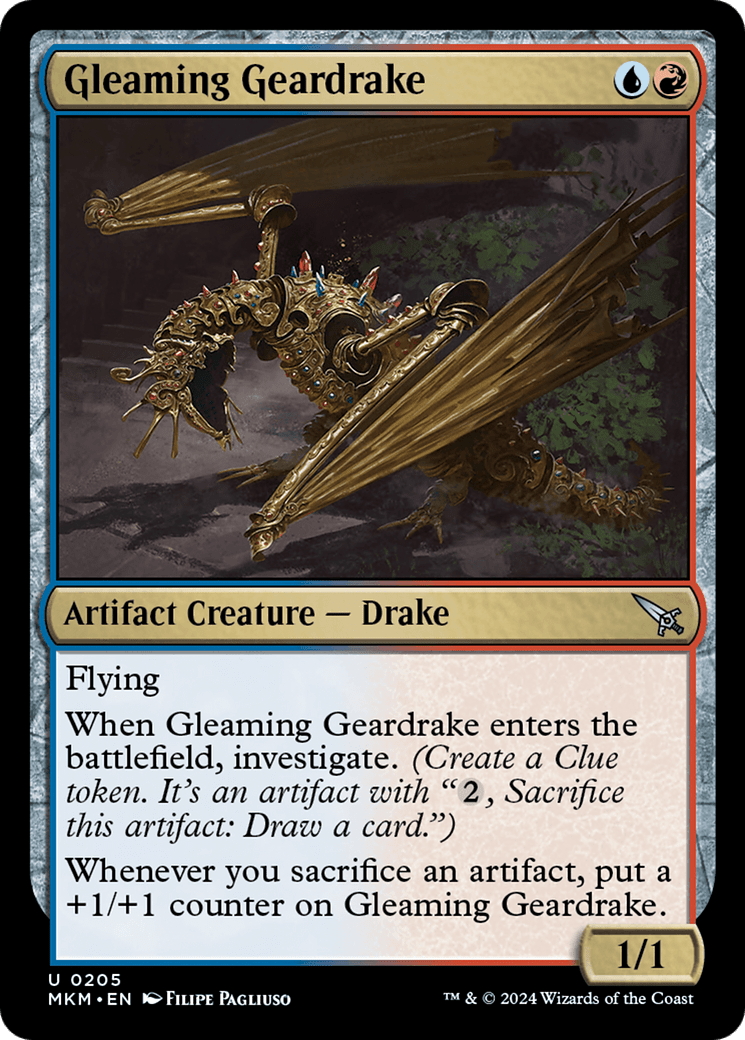

Five-Color midrange works, consistently built with two primary colors and three splashes. Surprisingly, these Five-Color decks weren’t all base-green for the fixing. There was a base Azorious deck using strong Disguise creatures without any other color requirements before turn six, a Golgari-based token five-color utilizing Insidious Roots, and a White-Based Enchantress deck using Case-File Auditor to search up Case of the Shattered Pact. There’s enough colorless fixing to consistently have three-to-five sources, and most of those cards have a second function. Gravestone Gargoyle fixes mana while enabling Gravebreak, Buried in the Garden is removal and fixing, and Case of the Shattered Pact is a win condition by itself after it grabs a basic land. In general, the only real commonality was an abundance of rares to take the game back after the time lost fixing mana. If you want to be five colors, your path through the draft will usually be rares, then fixing, then card selection to bridge that gap.
The bad news about rares/mythics is that you need them, with only three collected trophies managing without any. This is a sharp decrease from LCI and WOE, with twenty-two and sixteen zero-rare decks respectively. The good news about rares/mythics is that there are more than usual, with a menagerie of interesting interactions and cool ways to build around them. You will often be the only one seeking a niche card at your table, with relatively few rares that work in every deck. Try to build around the rares you get early, and pay close attention to the rares you’re passed to find the open lane.
Pump spells, combat tricks, and specialized removal are performing better than spells that kill creatures. Auspicious Arrival and The Chase is On replace themselves, Out Cold buys a lot of time to attack or dig for threats, and neither have to worry about the mana advantage lost to paying for Ward. The successful removal spells are the ones that leave some value behind (Makeshift Binding and Torch the Witness) or allow for a tempo swing at one-mana (Shock and Hard-Hitting Question). Try to match your removal and pump spells both to your curve, as it’s usually better to be proactive in Murders at Karlov Manor Draft.
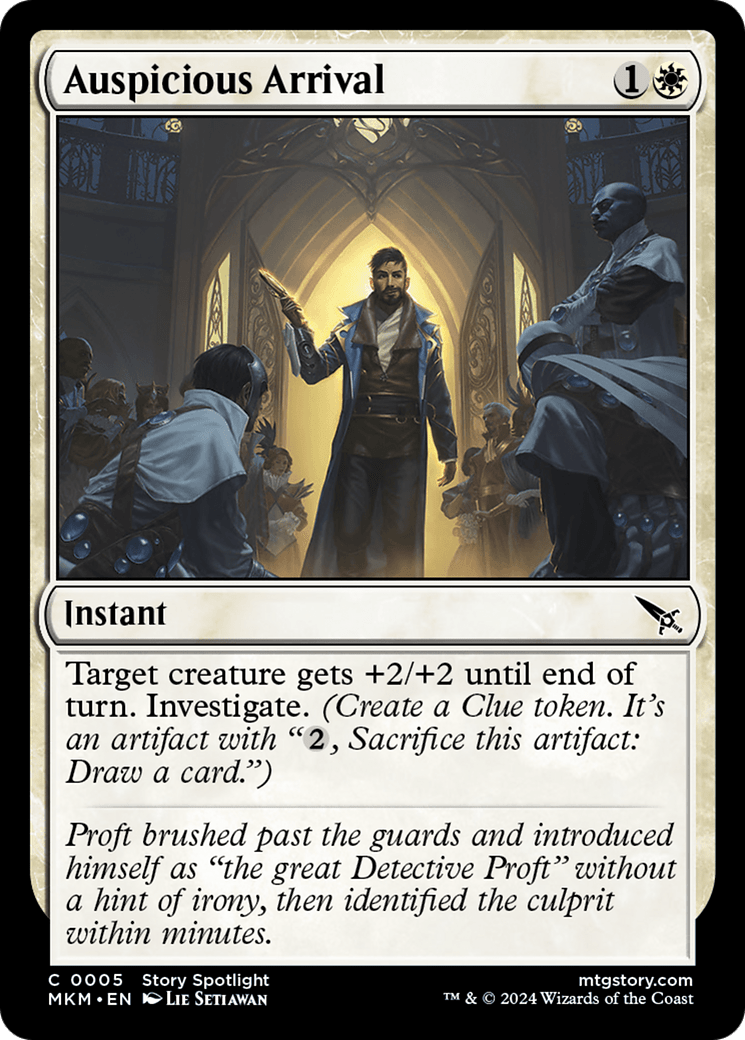
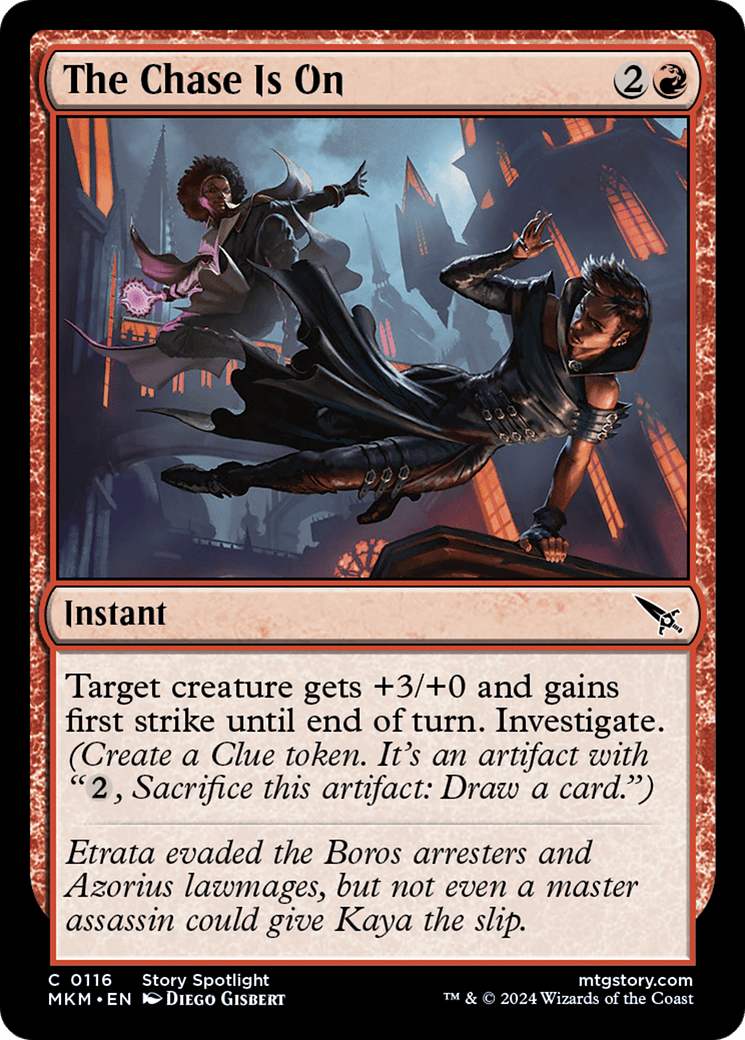
Common and Uncommon cards often formed synergistic packages of cards, with many of the mythic drafters picking weaker cards in pack two to find their missing pieces. Airtight Alibi was only present in four of the trophy lists, and all four “Alibi Packages” included both powerful two mana value creatures and rare five-six mana creatures. Shady Informant needs a lot of ways to Suspect it but gets a lot stronger with menace, Crowd-Control Warden necessitates a way to gain Trample, and Out Cold gets an opponent to commit more creatures to the board for a sweeper. Try to think about your synergy packages as you draft, and prioritize flexibility over conventional power.
I noted in my Advanced Draft Primer that this would be an eighteen-land format, simply because we can’t play 17.5 lands. I was wrong – all but nine of the aggressive decks ran seventeen lands, and nearly every other deck ran seventeen lands with some combination of two-to-three Nervous Gardeners, Tunnel Tipsters, Case of the Shattered Pact, or extra card selection. Decks with eighteen lands tended to have three-plus colors or card selection in the form of clues, with fewer ways to search up lands or Surveil.
Taken together, the trophy lists consistently have a plan. At Common, this plan is very general: aggressive players navigate their draft knowing by the end of the first pack that their creatures need to be efficient, and midrange decks prioritize flexibility. This isn’t new, but MKM is special because decks can also be drafted around very specific plans. The rares are powerful, synergistic engine pieces don’t work in other decks, and there are a lot of available ways to affect the speed of the game. Izzet is the strongest example of this, but trophies came from forcing Insidious Roots combos, Field of the Dead Control, Persuasive Interrogators Poison, Pyrotechnic Performer Burn, and many more. If you open a fun rare to build around, first identify your key cards and then prioritize bringing the game to your desired length.
What’s Not?
Removal is bad. You probably need a little bit of it, but it’s going to cost you in mana against Ward and in cards against Investigate. Most of the trophy lists had three-or-fewer removal spells, with a few exceptions in the form of harder control decks. Combat tricks and non-removal interaction performed much better, with removal being just a small piece of each deck. I think the takeaway is that removal doesn’t deserve its own classification in MKM, it’s just one way to deal with a threat or clear a blocker. As you pick each Murder/Suspicious Detonation/Not On My Watch, try to consider what it’s doing for you and how it fits into your deck. You can run a lot of removal spells if you know you’ll win a long game, or if you just need to clear the way for your blockers and don’t have enough Out Colds.
Despite a notable uptick in black near the end of the week, there were still as many Escape Tunnels as Swamps in the 100 Trophies (thirty of each). Black’s strength in MKM is in its removal spells, and it suffers a lot from removal as a whole being weak. Over the course of the week, black decks began to utilize more of a Tempo strategy by deploying efficient two mana creatures, using removal in the midgame, and ending things with rare bombs or splashed power cards. I didn’t receive a single Golgari list until my fifth day of collecting data, but it was interesting to see the evolution of the format in real time as it became the fifth most successful color-pair. Dimir and Orzhov both had a poor showing, and seem to require more than a few rares to perform well.
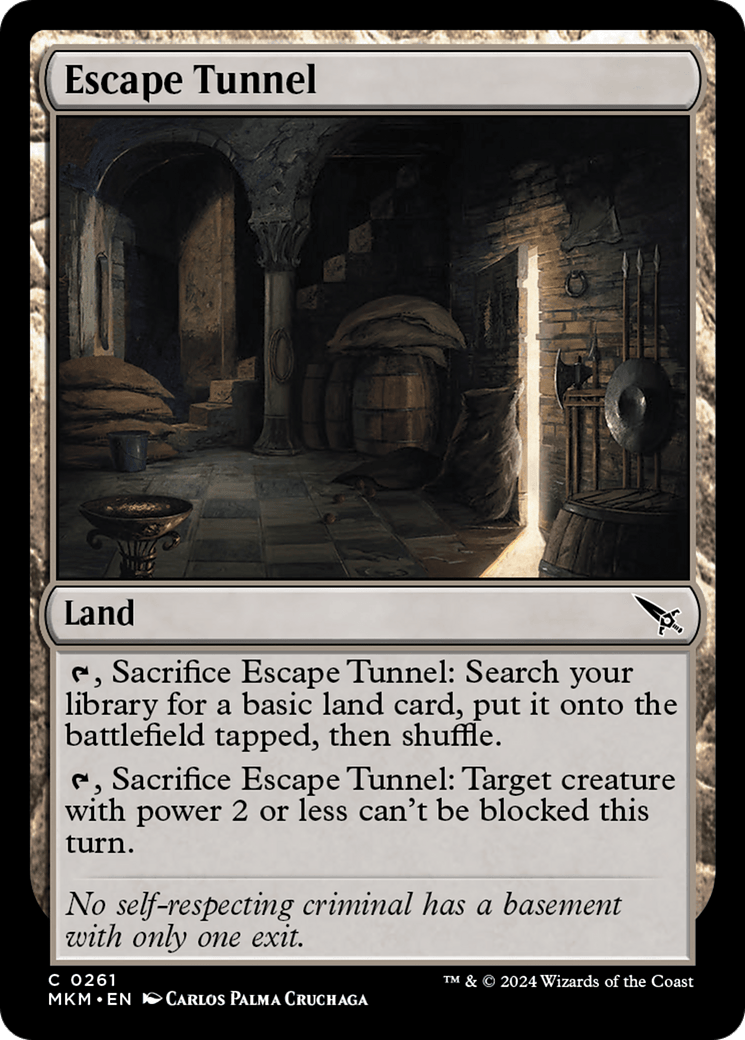

Control in general is incredibly difficult to get a trophy with. The aggressive decks are incredibly fast, and spending a spell on a Novice Inspector feels like a loss even when it’s a 5/6. A few lists had success with a high percentage of rares to follow a removal suite, but the percentage of creatures required in this format turn most would-be control decks into Tempo decks winning with evasive threats. Decks without enough creatures need to draw really well to line up their interaction with the right threats at the right time, and it’s difficult to do that consistently enough for a trophy.
Curves will look generally strange in this format, but having too many cards that will be cast for three-mana is disastrous. It’s difficult to build a curve around three-mana creatures and still have time to flip creatures face-up or crack clues. There were trophy decks with twelve two-drops and twelve four-drops, but a creature needs to be exceptionally powerful if you can only cast it for three-mana. Remember to put your Disguise creatures in the three-drop slot as you build, and think about how you’re going to find the time to flip them face up.
Few decks had any equipment, which seems to be a more control/midrange tool. Aggressive decks simply don’t have time to attach it to creatures, and most decks would rather have instant-speed ways to pump their creatures. Thinking Cap made the cut for a lot of detective decks and Krovod Haunch has a place in some white decks, but none of the uncommon clue equipments had more than one copy in the 100 trophy lists.
Takeaways for your draft:
- Have a plan for winning the game. Think of it on your first pick, and update it as you draft.
- White is the strongest color at common, feel free to force it for your early drafts if your rares are weak
- It’s worth building to accommodate most of your rares
- As you draft, pay attention to the little synergy packages that make up your deck
- Have a good reason to move into Black
- Run 17.5 lands
- Proactive threats are more important than reactive spells
- Really think about how much removal you need, and what will happen if your hand is full of it
- If you’re midrange, try to grab cards that leave a little extra value in the form of life, mana, or clues
- Two-drops are stronger than usual – Sanitation Automaton is fine for trading with Disguise creatures
- Splashes are worth it but take fixing first
- Izzet needs an engine
- Five-Color decks need rares, not just perfect mana
- Control works but requires a lot of specific cards and skills
- Collect Evidence is usually free for a few cards, and you’ll need to work to enable more of it
- These four commons had zero copies in any of the trophy lists:
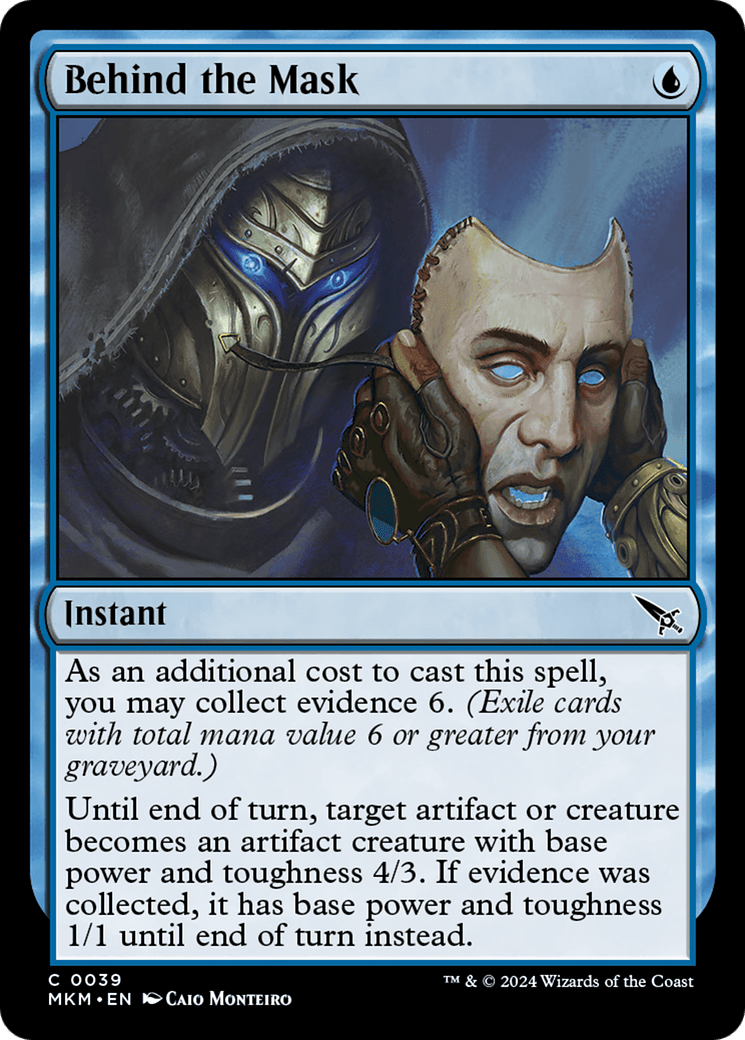
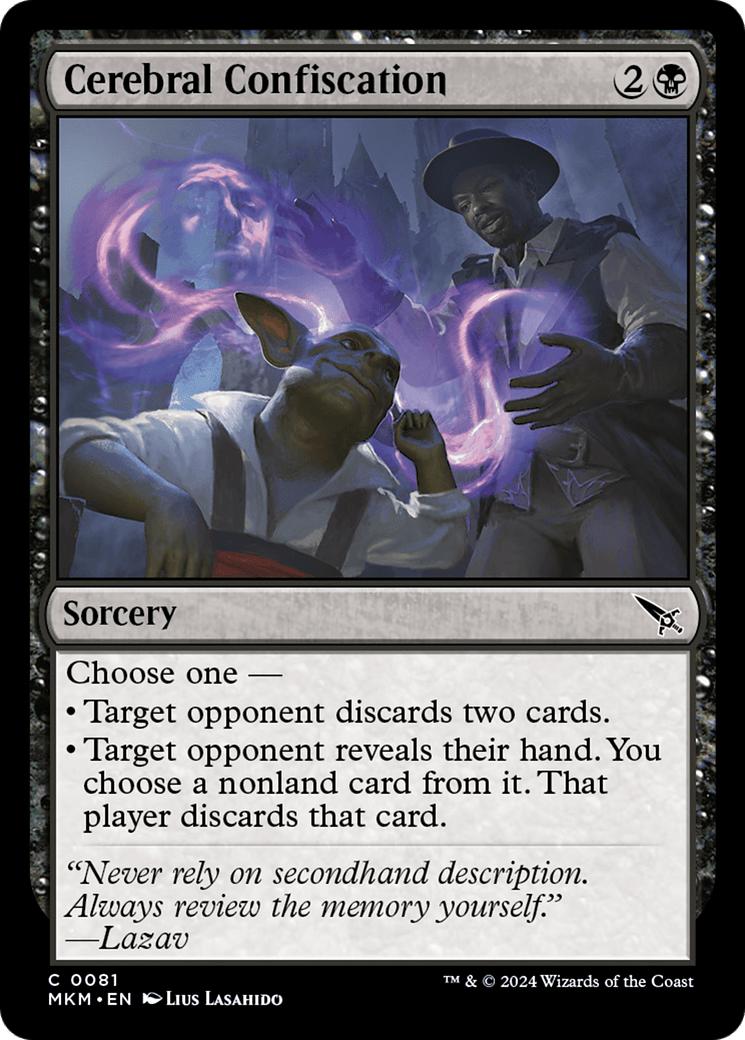
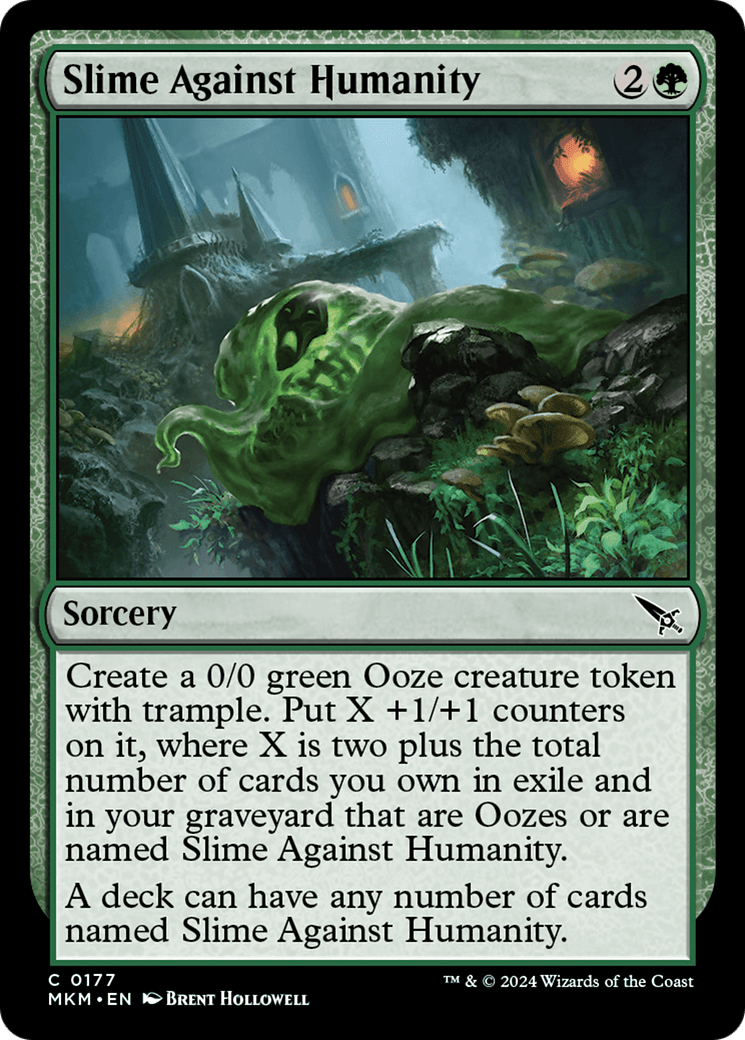

DEATH MATH!!!
- Greenbelt Rampager adds one more damage per creature and trample
- On the Job adds two-damage per unblocked creature
- The “burn” spells that hit a player usually deal three damage – Lightning Helix, Pyrotechnic Performer, Alley Assailant, Cornered Crook, Granite Gargoyle
- If your opponent is attacking with a single face down creature, the most damage it can deal is seven as Offender at Large, as it’s unlikely they have enough creatures for seven power Crowd-Control Warden
End Step
I’m having a great time deducing the Disguises and instants, the open lanes and strange engines. There’s clear best and worst colors, but they’re still close enough together to be worth experimenting with. If you struggled with it on release, I encourage you to come back and see where the format is now.
I update all of the card rankings every week based on my findings and the data!
If you have more questions or want to see me tackling this set all the way through Mythic in MTG Arena, stop by Twitch.tv/ScuffleDLux or the TheGathering.gg Discord any time.
Until I see you again, Happy Drafting!
FAQ
- What is a splash? What’s the difference between splashing and a third color?
A “splash” in Magic is adding just a little bit of another color. Sometimes a drafter will open up a powerful rare outside of their colors that’s worth being able to cast in the late game, or sometimes they’ll splash something that is difficult for their other colors to do. A splash is usually for a card that won’t be played until late in the game, when a larger percentage of the deck is drawn. The difference between a splash and a third color is really just the amount. For these trophy lists, I considered a deck to be three-colors when there were five-or-more cards of that color.
- Why Trophy Lists?
Magic is a game full of variance and decisions, with enough variables to make individual games less helpful for data. Is that card really bad, or did they just not draw any lands in that game? A deck needs more than luck to get seven wins before two losses.
- How do you get your data?
17Lands.com is still the best website for draft data, and it’s always worth looking at. I try to get half my lists directly from them and half from various other sources as the 17Lands players mostly also use 17Lands. I usually try to gather a few hundred, then take a random selection of those.
- Why 100 Trophies
1,000 would be better, but frankly 100 is the most I can scrutinize closely. I actually run out of steam around 85, but 100 is at least rounder
- How do you decide what to track?
I always track splashes, colors, and lands. For everything else, I analyze the first twenty-five trophies and try to find trends, then go back and count those things. Sometimes I find trends late that I wasn’t tracking the whole time and can’t really go back, this time there was a tendency towards picking Escape Tunnels aggressively and redundancy in uncommons that I can’t go back and check
